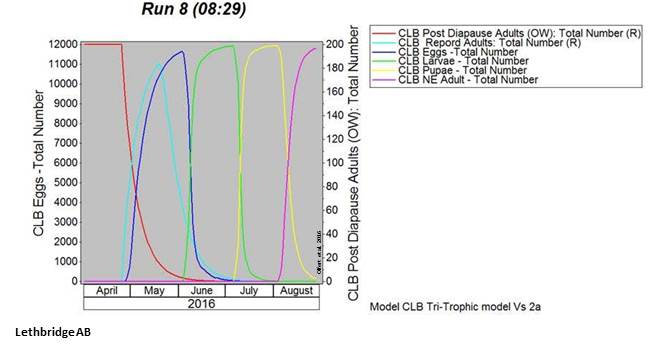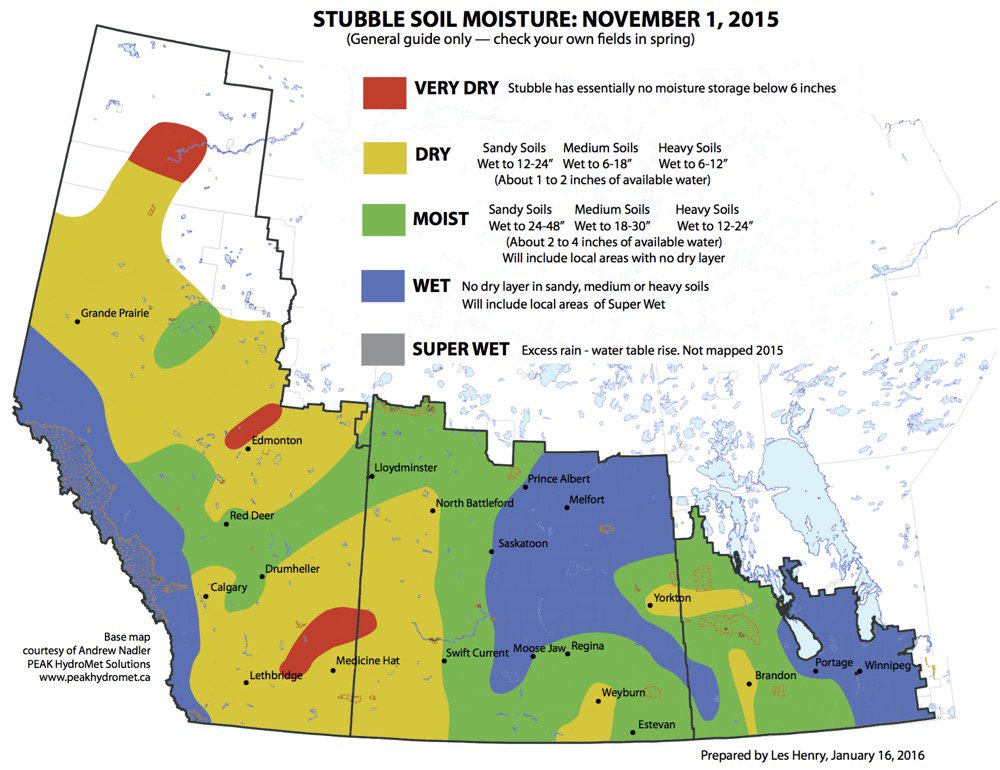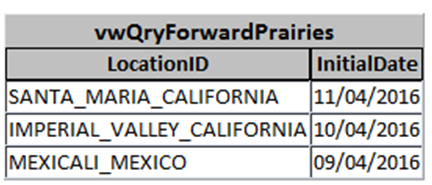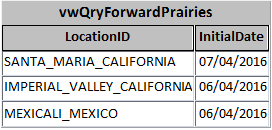Cereal Leaf Beetles (Oulema melanopus) – Observed meteorological data (April 1-24, 2016) collected across the prairies was incorporated into a simulation model which calculates estimates of cereal leaf beetle (CLB) development stages for April 25-29, 2016. The similuation model predicts the occurence of adults, eggs, and larval stages in the field and helps growers time their in-field scouting. Throughout June, outputs will be updated and growers will want to pay attention to the predicted appearance of larvae in order anticipate and time their in-field scouting.
For the week of April 25-29, 2016, CLB phenology is predicted to vary across the three provinces with phenology in Swan River MB predicted to be almost three weeks later than Lethbridge AB. The following simulation outputs for Maple Creek SK, Lethbridge AB, Yorkton SK and Swan River MB are included below.
Fact sheets for CLB are published by the province of Alberta and by the Prairie Pest Monitoring Network. Also access the Oulema melanopus page from the new “Field crop and forage pests and their natural enemies in western Canada – Identification and management field guide”.
.












